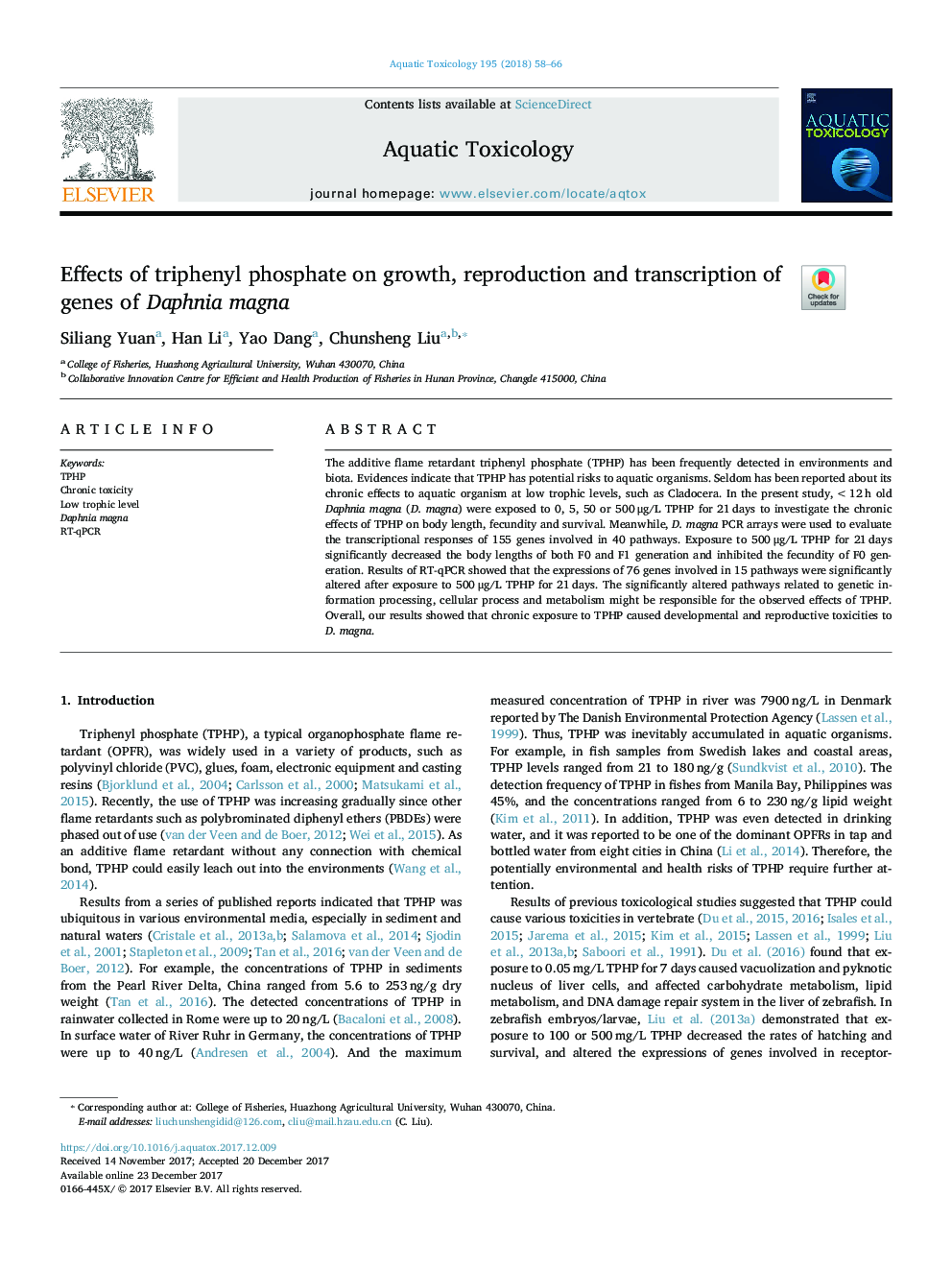| Article ID | Journal | Published Year | Pages | File Type |
|---|---|---|---|---|
| 8883860 | Aquatic Toxicology | 2018 | 9 Pages |
Abstract
The additive flame retardant triphenyl phosphate (TPHP) has been frequently detected in environments and biota. Evidences indicate that TPHP has potential risks to aquatic organisms. Seldom has been reported about its chronic effects to aquatic organism at low trophic levels, such as Cladocera. In the present study, <12â¯h old Daphnia magna (D. magna) were exposed to 0, 5, 50 or 500â¯Î¼g/L TPHP for 21â¯days to investigate the chronic effects of TPHP on body length, fecundity and survival. Meanwhile, D. magna PCR arrays were used to evaluate the transcriptional responses of 155 genes involved in 40 pathways. Exposure to 500â¯Î¼g/L TPHP for 21â¯days significantly decreased the body lengths of both F0 and F1 generation and inhibited the fecundity of F0 generation. Results of RT-qPCR showed that the expressions of 76 genes involved in 15 pathways were significantly altered after exposure to 500â¯Î¼g/L TPHP for 21â¯days. The significantly altered pathways related to genetic information processing, cellular process and metabolism might be responsible for the observed effects of TPHP. Overall, our results showed that chronic exposure to TPHP caused developmental and reproductive toxicities to D. magna.
Related Topics
Life Sciences
Agricultural and Biological Sciences
Aquatic Science
Authors
Siliang Yuan, Han Li, Yao Dang, Chunsheng Liu,
